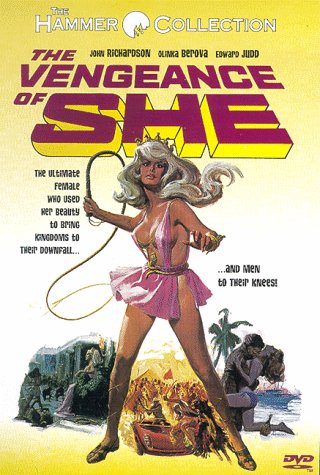Rusty Knife
aka 錆びたナイフ aka Sabita Naifu
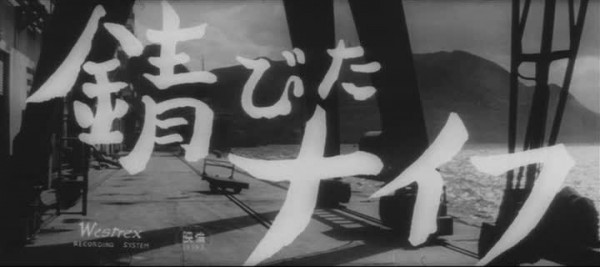
1958![]()
Written by Shintaro Ishihara
Directed by Toshio Masuda
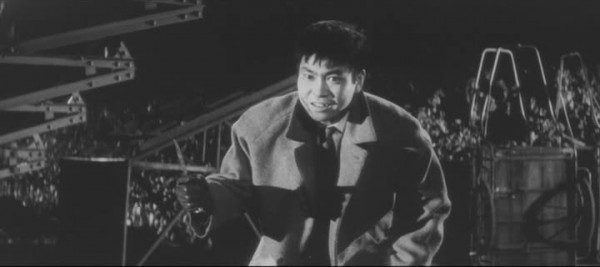
Yukihiko Tachibana (Yujiro Ishihara) is released from prison and trying to go straight, after spending time for killing the man who raped and murdered his girlfriend. But the crime of what happened to her still haunts him. Meanwhile, the cops look for witnesses to murders committed by the local yakuza boss, something Tachibana unwittingly became during his time as a thug. But when he and fellow witness Makoto Terada (Akira Kobayashi) get approached by the cops, they get pulled back into the underworld, and soon there will be a whole lot more murders as the yakuza moves to silence everyone and Tachibana discovers his girl was attacked by more people when she was killed.
The debut picture of future hitmaker Toshio Masuda, Rusty Knife weaves a believable web of police seeking justice through the courts, yakuza bribing and murdering their way clear, and the people caught in the middle. It’s only really handicapped by the too obvious reveal of who the real villain is, his character existing entirely to be a big reveal and contributing little else. The Nikkatsu action format still had a few kinks to work out, but the overall style is coming along nicely.
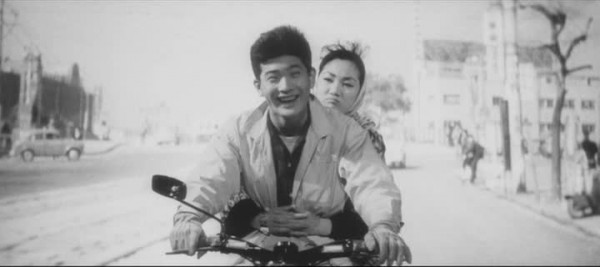
Mie Kitahara clocks in another appearance alongside frequent costar and future husband Yujiro Ishihara as Keiko Nishida, a daughter of a politician who killed himself, until information comes to light that it was staged and he was murdered. Tachibana and Terada are two of the witnesses to the staging, but despite knowing Nishida, he doesn’t realize it was her father he saw being killed until much later. Unfortunately, she seems largely an extraneous character, only sharing a few scenes with Ishihara. While it is nice from a world building stand point, it becomes a negative ding in the film on the emotional front.
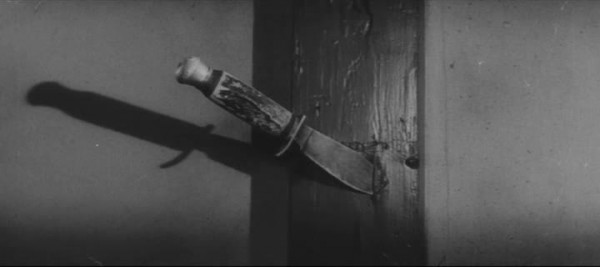
Tachibana’s turmoil as he tries to do the right thing while being haunted by crimes and thoughts of revenge are countered by Terada’s devotion to not do the right thing, and to hopefully collect a big payday from the yakuza to keep quiet. He spends most of the film living a fast live, zooming around on a motorcycle with his tough-talking girl, Yuri (Mari Shiraki). His obvious assistant player ranking in the movie’s hierarchy combines with his reckless life to doom him in the end, despite the best efforts of Tachibana to save him. Terada manages to avoid his fate for a good deal longer than it seemed he would, but the “secret” villain having city-wide connections does him in.
If anything, Rusty Knife sets up the main villain similar to The Kingpin in the recent Daredevil series, a powerful boss who works from the shadows and has his fingers in every pie. He dispatches orders by ham radio, and his thugs don’t even know who he is or his name. But instead of the heroes dressing up in pajamas and punching people, the cops work with repentant criminals to set up stings to systematically break down the villain’s organization. Police and community working together to bring down evil, a refreshing tale with all the recent problems with police vs. community we’ve had in the past few years in the US.
The cops are the initial focus of the film, Tachibana doesn’t even enter the picture until the mob underboss Seiji Katsumata (Noaki Sugiura) has been arrested and subsequently let go after Japan’s version of “snitches get stitches” is enacted (In this case, the snitch gets tossed from a moving train in front of a different moving train, which is creative to say the least!) Rusty Knife then switches on Tachibana, having set up the mythology of our city and the untouchable and dangerous nature of the yakuza. While most of the other witnesses seem motivated out of greed or a sense of disgust, Tachibana operates out of revenge. Revenge for his girl who was raped and killed by the yakuza, whose attackers all got away with it (barring the one Tachibana killed before he was sent to jail) until the truth was revealed to him years later. He’s torn between just killing the attackers, or taking them down and using them to take down the shadow behind it all. Conflicted characters help bring noir to life, as they fit in perfectly with a world that is nothing but shades of grey. Tachibana did bad things, but others are doing far worse things, and though killing them would bring a sense of justice, it won’t bring a sense of closure and would lead to the invisible hand getting away.
Rusty Knife has some cool scenes, the truck chase as Tachibana races to try to save Terada from the yakuza goons gives some great action and suspense even if bits of it are staged a little hokey. I likes the bits with the police vs. the mob, only wishing they seemed more like actual characters rather then basically faceless good cops. It is all part of the world building, and there is no way that makes sense that would connect them into the story as bigger characters, which is a shame. The story would even work fine being stretched out into a multi-episode arc of a crime drama series, the additional time giving some much needed polishing to the weaker bits. But overall, Rusty Knife was a solid Nikkatsu entry, Tachibana’s conflicts reflecting the moral conflicts of youth who grew up in post-war Japan and were chafing against the older generation’s rules without spelling out the conflict as blatantly as the sun tribe pictures. Rusty Knife is worth watching for noir fans, showing the Japanese noir evolving to come into its own and serving up a believable world of gangsters and conspiracies that the characters must work their way through.

Rated 7/10 (logo, secret cane weapon, Surviving Edged Weapons, deaf signal writer, this movie loves having weird faces, bar decoration, apartment decoration)
Please give feedback below!






















